WOMEN EMPOWERMENT
When we talk of women empowerment today, we think about ensuring that they have better education, more awareness, literacy and understanding of their rights.
Further, they should be free to pursue their desired desired goals to boost their confidence.
However, there are seven factors that can act as catalyst in women empowerment process. These are:
1. The society needs to adopt a meaningful content which is fulfilling for them.
2. Create a safe environment for them. They should be made aware about it so that they feel comfortable in such environment.
3. Our society needs to be gender sensitive. The male members should ensure that there is nothing which is done to hurt their self esteem.
4. Build partnership with women and make them feel that they are equal.
5. Provide them with the access and tools for sharing their ideas, views and comments.
6. Males should not do anything that hurts the self-esteem of women.
7. Last but not the least is, that the system sustainability is ensured.
It must not be forgotten that India is a country where brave queens had ruled. They fought battles with the foreign invaders including Portuguese and the British.
We can not forget the great deeds of of queens who relentlessly fought the foreign invaders. Following names are particularly noteworthy among them.
RANI ABBAKKA CHOWTA
Rani Abbakka Chowta was the first Tuluva Queen of Ullal who fought the Portuguese in the latter half of the 16th century. She belonged to the Chowta dynasty, an indigenous Tuluva dynasty who ruled over parts of coastal Karnataka (Tulu Nadu), India. Their capital was Puttige. The port town of Ullal served as their subsidiary capital. The Portuguese made several attempts to capture Ullal as it was strategically placed. But Abbakka repulsed each of their attacks for over four decades. For her bravery, she came to be known as Abhaya Rani (The fearless queen). She was also one of the earliest Indians to fight European colonialism and is sometimes regarded as the ‘first woman freedom fighter of India’. In the state of Karnataka, she is celebrated along with Rani Kittur Chennamma, Keladi Chennamma, Rani Chennabhairadevi and Onake Obavva, as the foremost women warriors and patriots.
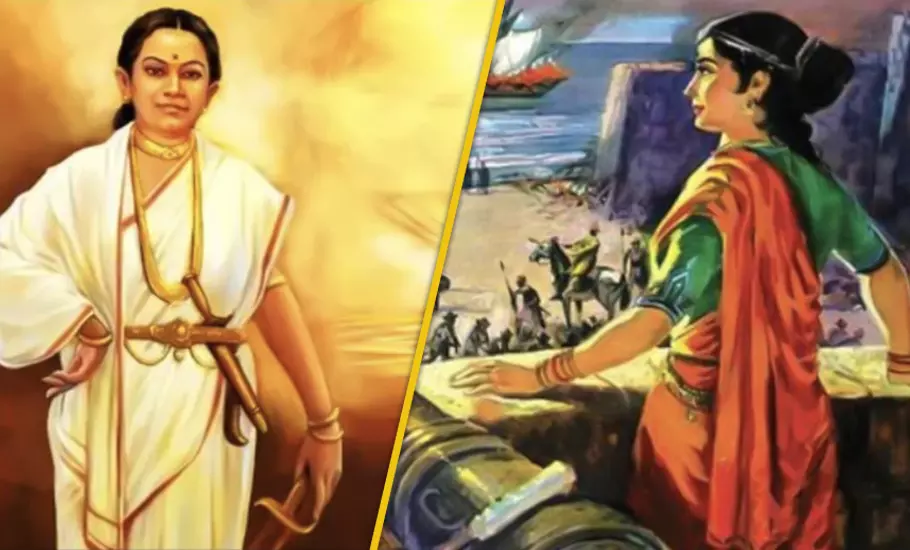
QUEEN AHILYABAI HOLKAR
Ahilyabai Holkar (31 May 1725 – 13 August 1795) was the Rani of Indore, within the Maratha Confederacy. She established Maheshwar (in Madhya Pradesh) as the seat of the Holkar Dynasty. After the demise of her husband Khande Rao Holkar and father-in-law Malhar Rao Holkar, Ahilyabai herself undertook the affairs of the Holkar dynasty. She defended the Malwa state against intruders and personally led armies into battle, with the Tukoji Rao Holkar as her military commander. She was also known for the construction of various Hindu temples and Dharmashalas across the Indian Subcontinent. She was also known for breaking traditional gender rules 18th Century in India.
Ahilyabai was born into a Marathi Hindu family to Mankoji Shinde and Sushila Shinde in the Chaundi village (present-time Ahmednagar district) of Maharashtra, where her father, Mankoji Shinde, a scion of a respectable Dhangar (Gadariya) family, served as the Patil. Although women did not go to school back then, Ahilyabai’s father taught her to read and write.
According to a legend, she rose to prominence when Malhar Rao Holkar, a commander in the army of Maratha Peshwa Baji Rao and ruler of Malwa, stopped in Chandi on his way to Pune and saw the eight-year-old Ahilya at a temple service in the village. Impressed by her piety and character, Malhar’s son, Khande Rao Holkar, married Ahilya on the Peshwa’s advice. She married Khande Rao in 1733. Ahilya accompanied Khande Rao on many campaigns. Throughout her married life, she was brought up by her mother-in-law, Gautama Bai, who is credited today for the values instilled in Ahilya. She trained her in administration, accounts, politics, etc, and eventually handed over her Khasgi Jagir in 1759.
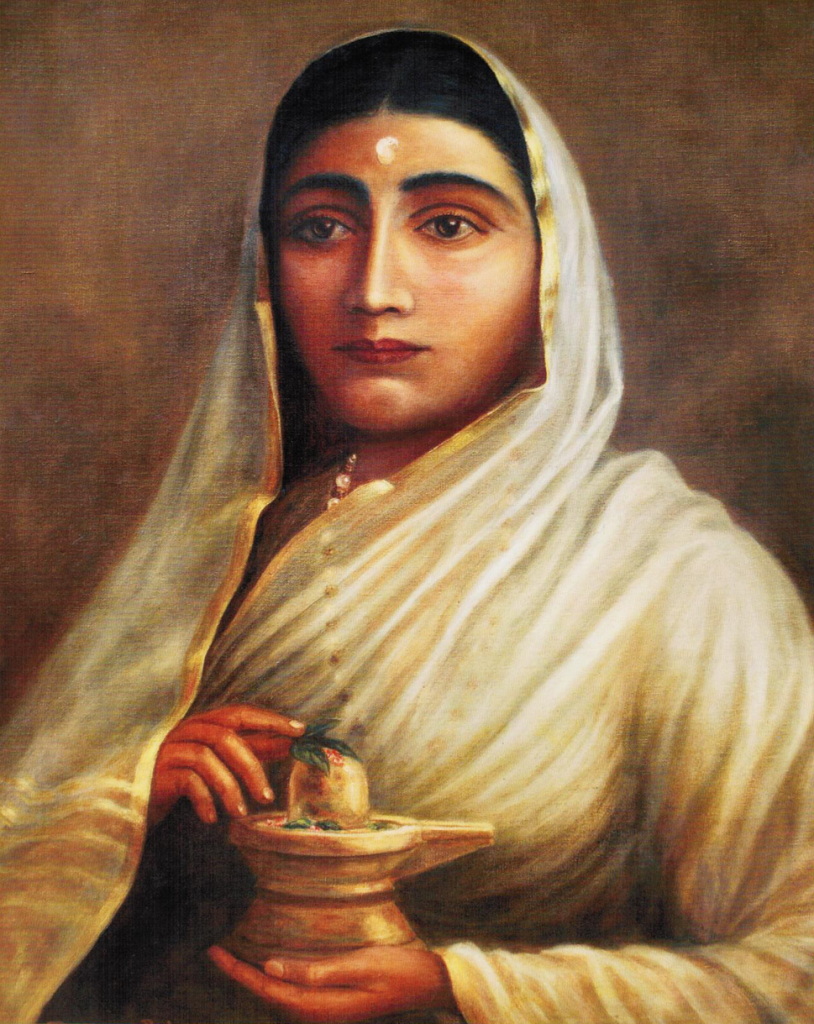
RANI TARABAI BHOSALE
Tarabai Bhosale (néeMohite) was the regent of the Maratha Empire from 1700 until 1708. She was the queen of Rajaram I, and daughter-in-law of the empire’s founder Shivaji I. She is acclaimed for her role in keeping alive the resistance against Mughal occupation of Maratha territories after the death of her husband, and acting as the regent during the minority of her son, Shivaji II.
Tarabai came from Mohite clan. She was the daughter of Hambirrao Mohite, Commander-in-Chief of Shivaji, the founder of the Maratha kingdom. Hambirrao’s sister Soyarabai was the queen of Shivaji and the mother of his younger son Rajaram I. Tarabai married Rajaram at the age of 8 in 1682, becoming his second wife. After the death of his step-brother and predecessor Sambhaji, Rajaram ruled the Maratha Empire from 1689 to 1700, when his first wife Jankibai was the queen consort. On Rajaram’s death in March 1700, Tarabai proclaimed her infant son, Shivaji II (later known as Shivaji I of Kolhapur) as Rajaram’s successor and herself as the regent.
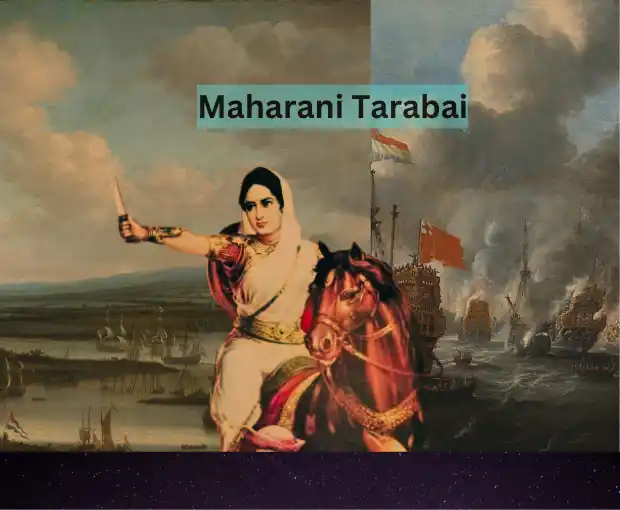
RANI LAKSHMIBAI
Lakshmibai Newalkar, the Rani of Jhansi born Manikarnika Tambe; 19 November 1828 — 18 June 1858), was the Maharani consort of the princely state of Jhansi in Maratha Empire from 1843 to 1853 by marriage to Maharaja Gangadhar Rao Newalkar. She was one of the leading figures in the Indian Rebellion of 1857, who became a national hero and symbol of resistance to the British rule in India for Indian nationalists. Born into a Karhada Brahmin family in Banares, Lakshmibai married the Maharaja of Jhansi, Gangadhar Rao, in 1842. When the Maharaja died in 1853, the British East India Company under Governor-General Lord Dalhousie refused to recognize the claim of his adopted heir and annexed Jhansi under the Doctrine of Lapse. The Rani was unwilling to cede control and joined the rebellion against the British in 1857. She led the successful defense of Jhansi against Company allies, but in early 1858 Jhansi fell to British forces under the command of Hugh Rose. The Rani managed to escape on horseback and joined the rebels in capturing Gwalior, where they proclaimed Nana Saheb as Peshwa of the revived Maratha Empire. She died in June 1858 after being mortally wounded during the British counterattack at Gwalior.
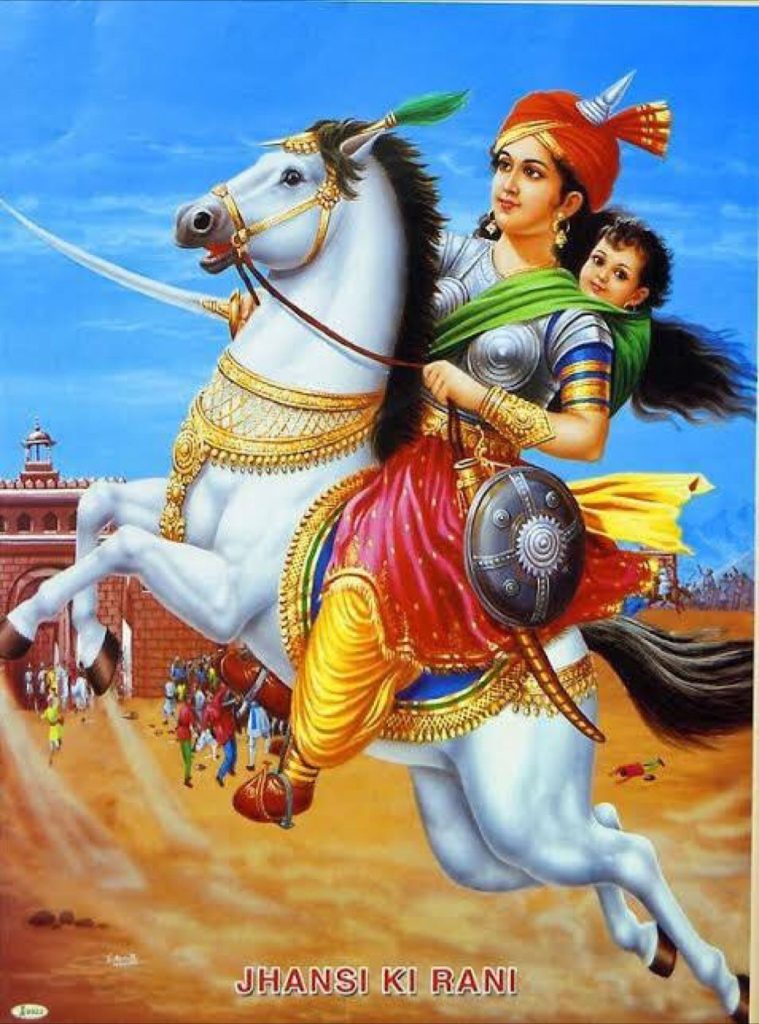
RANI DURGAVATI
Rani Durgavati (5 October 1524 – 24 June 1564) was the Queen regent of Gondwana in 1550-1564 A.D. She got married to King Dalpat Shah, the son of King Sangram Shah of Gondwana. She served as regent of Gondwana during the minority of her son, Vir Narayan, from 1550 until 1564. She is chiefly remembered for defending Gondwana against the Mughal Empire.
Durgavati was born on 5 October 1524 at the fortress of Kalinjar. She was born in the family of the Chandela Rajput king Shalbaham, who ruled the Mahoba kingdom. In 1542, she wed Dalpat Shah, the eldest son of the king Sangram Shah of the Garha Kingdom. The Chandelas of Mahoba and Rajgonds of Garha-Mandla dynasties became allies through this marriage.
King Dalpat Shah died in 1550 CE when his successor Crown Prince Vir Narayan was merely 5 years old. His wife, Queen Durgavati rose to take the reins of the Gondwana kingdom as regent during the new king’s minority. Diwan Adhar Kayastha and Minister Man Thakur helped the Queen in looking after the administration successfully and effectively. Queen Durgavati promoted peace, trade, and good will throughout her realm. Rani Durgavati moved her capital from Singorgarh fort to Chauragarh fort. It was a fort of strategic importance situated on the Satpura hill range.
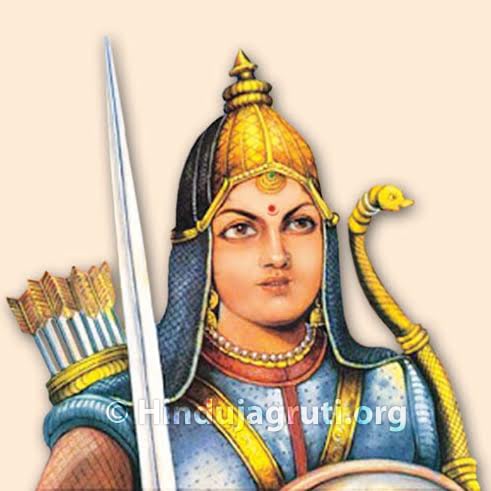
NAIKA DEVI
Naiki Devi was the regent queen of Chaulukya dynasty during her son Mularaja II’s infancy from 1175. She was a queen of the Chaulukya king Ajayapala.
Her earlier life is not known, according to Prabandhachintamani of Merutunga, she was daughter of one Paramardi. One theory identifies this Paramardi as the Kadamba king Permadi-deva, but according to historian Ashoke Kumar Majumdar, she was likely the daughter of the Chandela king Paramardi (reigned c. 1165-1203 CE).She was married to Chaulukya ruler Ajayapala and had son named Mularaja, who later became king after his father’s death. When her son succeeded his father as king in 1175, she became regent during the minority of her son.In 1175, Muhammad of Ghor crossed the Indus, capturing Multan and Uch before penetrating in present-day Gujarat through the Thar Desert in 1178. Muhammad of Ghor was routed by Mularaja II and his Rajput allies from Nadol, Jalore and Abu at the Battle of Kasahrada. The location of battle is identified as a village named Kayandra near foothills of Abu hills. Persian chroniclers Minhaj al-Siraj and Ferishta mentioned that Muhammad of Ghor was routed by Bhima II (Mularaja brother and successor), although the epigraphic evidences confirmed that Mularaja II was ruling at the time of Ghurid invasion.
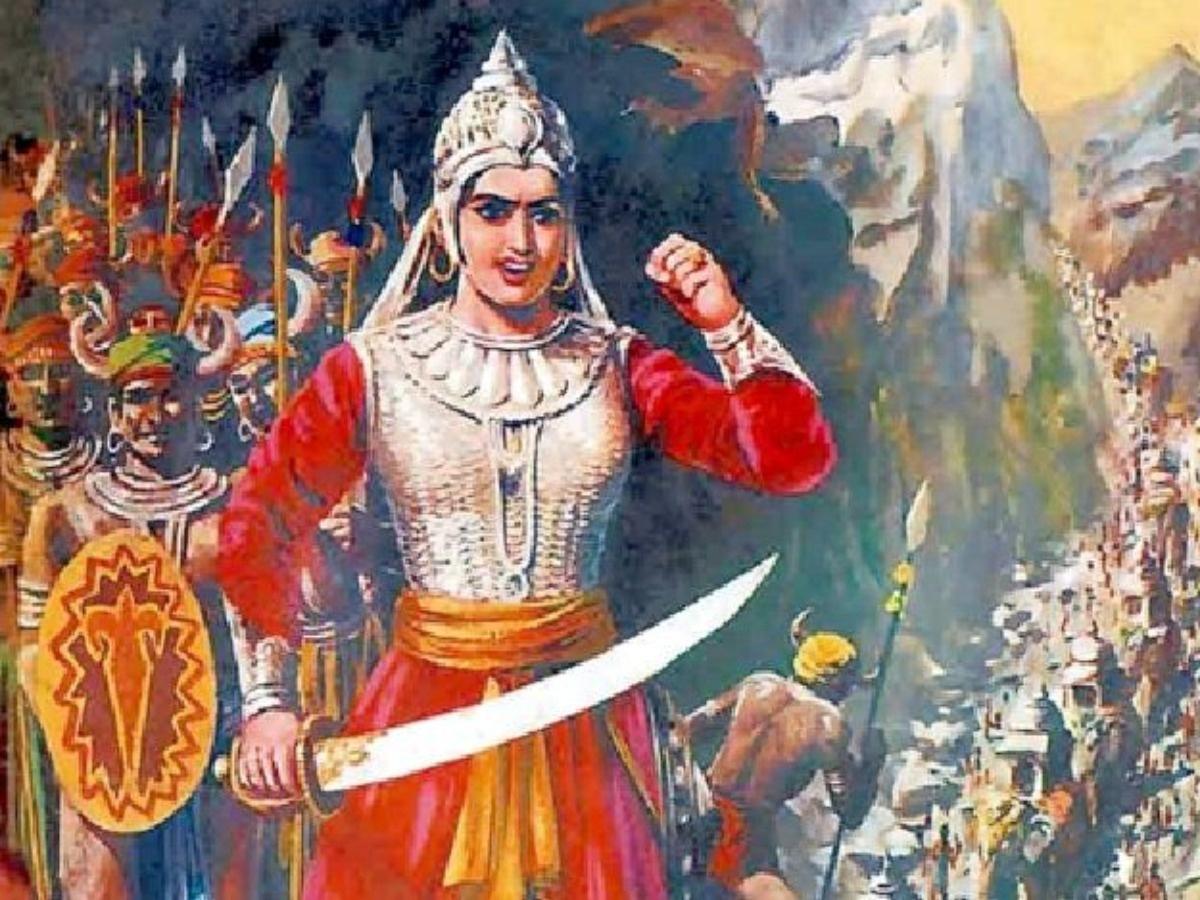
Thanks For Reading.